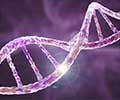Detecting the levels of ACE2 Protein can help track the status of SARS-CoV-2 infection. The Angiotensin-Converting Enzyme 2 is the receptor for SARS-CoV-2 present in the human tissues, including the lungs and heart.

TOP INSIGHT
Blood tests that detect the levels of ACE 2 protein fragments could help discriminate between patients infected with SARS-CoV-2 and those infected with the influenza A virus.
The research team used the data from BIAL Biobank, integrated with the Spanish National Biobank Network and the Valencian Biobank Network. Fifty-nine patients (24 were women and 35 men) with a mean age of 64 years who had got a positive RT-PCR test result were examined in the study.
Forty-eight people from this group had a moderate infection, while the remaining eleven people experienced respiratory failure and sought invasive mechanical ventilation and/or intensive care unit treatment. Two additional groups, one with 17 participants (aged 34 to 85 years), included patients with influenza A virus pneumonia, and the other consisted of 26 disease-free controls (14 women and 12 men) aged 34-85 years.
Immunoprecipitation and western blotting analyses were carried out to identify the ACE2 species in human plasma received from all the participants. The changes in ACE2 species were also examined in serum samples from mice that are genetically manipulated to have a human version of ACE2 protein.
"In this work, we have studied the plasma levels of the coronavirus receptor, the ACE2 protein, and we have been able to determine that there are different forms of the protein in plasma, and that part of the soluble ACE2 are proteolytic fragments of the ACE2 receptor, generated subsequently to interaction with the virus. The full-length protein is also found in plasma, which provides information about tissue affection during infection," explained Javier Sáez-Valero, lead investigator of the study.
 MEDINDIA
MEDINDIA




 Email
Email








